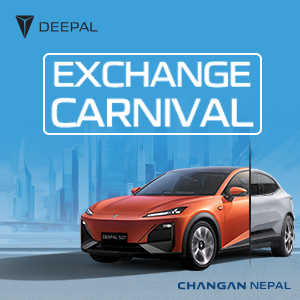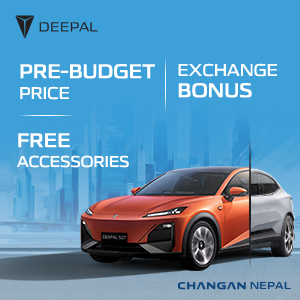
We use Google Cloud Translation Services. Google requires we provide the following disclaimer relating to use of this service:
This service may contain translations powered by Google. Google disclaims all warranties related to the translations, expressed or implied, including any warranties of accuracy, reliability, and any implied warranties of merchantability, fitness for a particular purpose, and noninfringement.

Highlights
- There are laws, policies, and regulatory approvals that allow the use of electronic cards in public transport. Technology has also been introduced by spending crores of rupees, the bus operators agree, but it seems that it is not implemented due to the excuses made by the driver and co-driver.



In most of the world's major cities, it is possible to easily pay fares by electronic payment card or electronic means while traveling on public transport. However, since few years in Nepal, there is an all-round increase in electronic payment, there is almost zero position towards travel payment card.

Big cities, also known as metro cities, have various convenient public transport options. This includes metro or mini rail, city bus, tram, ferry i.e. small ships for short distance water travel. It seems that almost everyone pays the fare electronically whether they have to travel regularly or casually. Somewhere by token, somewhere by card or mobile wallet. In the
bus, the card is lightly touched on the card reader machine (validation terminal) next to the door, and when the card is touched again on a similar machine next to the door, the fare payment is automatically completed. By doing this, the amount of rent paid and the remaining amount will be known immediately through the mobile app. If anyone needs a new card, they can get it instantly from retail shops near bus stops, from nearby ticket vending machines or from bus conductors. As the same card can be recharged as needed and can be used continuously, such cards are naturally preferred by everyone.
Also, since the same card can be used in all types of public transport, these cards are widely used. Taxi fare, parking fee, road toll fee etc. can also be paid with this card. Also, it is understood that work is being done not only in one city of the country but also in other cities with the same card. These days, these cards are available as debit cards from the customer's respective banks (open loop system), also available virtually, and since they have NFC technology, they can be carried close to the mobile containing the card. In this way, electronic means have made fares transparent, simple and convenient while using public transport in major cities of the world.
When discussing this very exciting topic of electronic card fare payment in public transport, it is necessary to keep the necessary infrastructure and environment information for this. Implementation of this type of e-card will be easier if there is an integrated public transport system run/managed by the state government. Since the use of CEMV cards will gradually increase in the future, mutual agreement between the Ministry/Department of Transport, card service provider companies, transport operating companies, agency banks and settlement banks is another indispensable condition for this. Another important technical aspect seems to be that at least one party has uninterrupted internet access or the security of running (offline) facilities even when the internet is not available.
Nepal has some special disadvantages in this regard. Fully government-owned public transport with a history of 63 years has limited geographic reach and availability. The rest are various committees/companies/organizations related to the transport business. There are various types of public transport. Maybe a route number is given, but not in use. There is no unified network blueprint that covers everyone. Investment in this technology will not become commercial until the desired level of ecosystem is created. In the past, some energetic entrepreneurs established the company, managed the necessary capital and technology, and took the regulatory approval to pay fares in public transport through cards. But they could not reach the stage of successful implementation. Is it because they can take 20 rupees even if the fare is 17?
There are laws, policies, and regulatory approvals for using electronic cards in public transportation. Technology has also been introduced by spending crores of rupees, the bus operators agree, but it seems that it is not implemented due to the excuses made by the driver and co-driver. The main thing is the establishment of transparency in the system, adherence to institutional governance and our dedication to the welfare of the common people. Unfortunately, while the top leaders of the neighboring countries are still launching digital cards, time has passed in forming alliances with us. Now without further delay let all those who initiate digital card initiative in the field of public transport with up-to-date technology get inspiration.
– Kandel is the former executive director of Nepal Rastra Bank.
 प्रकाशित : भाद्र २८, २०८१ ०७:२३
प्रकाशित : भाद्र २८, २०८१ ०७:२३

 २९.१२°C काठमाडौं
२९.१२°C काठमाडौं














